SNARL History Timeline
Compiled by Leslie Dawson – Updated 1/19/2004 by Dan Dawson, with many thanks to Phil Pister for his significant contributions. Most recent update March 2011.

1871: Convict Lake and Convict Creek are named. In pioneer times it was called Monte Diablo Creek, until September 17, 1871 when twenty-nine prisoners broke out of the state penitentiary in Carson City, Nevada. One group of six headed south, killing a mail carrier from Aurora. On September 22, 1871, posses from Aurora and Benton, led by Robert Morrison, took up the chase, stayed the night at the McGee place, and eventually encountered the criminals in Convict Canyon. Robert Morrison, a Benton merchant was killed in an ensuing fight and the convicts escaped. Three were later caught in Round Valley, two were lynched north of Bishop. Mount Morrison is named for Robert Morrison and rises majestically above SNARL. The Indian name for Convict Lake was Wit-sa-nap according to Mrs. A.A. Forbes of Bishop.
1895: James E. Summers of Inyo County purchased the Public Land from the US Government, the land grant is signed by president Grover Cleveland.
July 28, 1895: Property was purchased by Elizabeth and Richard Kirman, husband and wife, and Thomas B. Rickey , as part of 328 acres.
1897: Thomas B. Rickey of Ormsby County became the owner after the death of Richard Kirman, Thomas Rickey bought the property from the estate of Richard’s wife and son, Elizabeth Kirman and Richard Kirman Jr. for $60,000. This sale included all of the estate’s real estate in California and Nevada and all water rights.
August 20, 1902: Rickey Land and Cattle Company, T. B Rickey (President), and A. B. Rickey (Secretary), took over ownership. Land was sold for $85,000 in gold coin.
January 1, 1906: Frederick Eaton from the City of Los Angeles bought the property as part of the Eaton Ranch for $425,000 in gold coin, including all water rights and all buildings, improvements and fences.
May 10, 1906: Owens River Land and Cattle Company became the owners.
August 7, 1929: Eaton Land and Cattle Company owned by Harold Eaton and Fredrick Eaton quit claimed part of the property to the State of California to build the highway for $1800 and the State agreed to build a fence along the highway.
December 24, 1932: Fred and Helen Eaton, husband and wife, of Inyo County sold the property for $10.00 to the City of Los Angeles. This sale included the land with the water rights.
1900’s-1930’s: The City of Los Angeles bought the land and water for the Los Angeles Department of Water and Power as they had purchased much land in the Owens Valley. Lower Convict Creek was part of the land purchased by LADWP. Water from Convict Creek flows into the Los Angeles Aqueduct. SNARL land is currently leased from LADWP, although the University of California owns all of the buildings and other improvements.
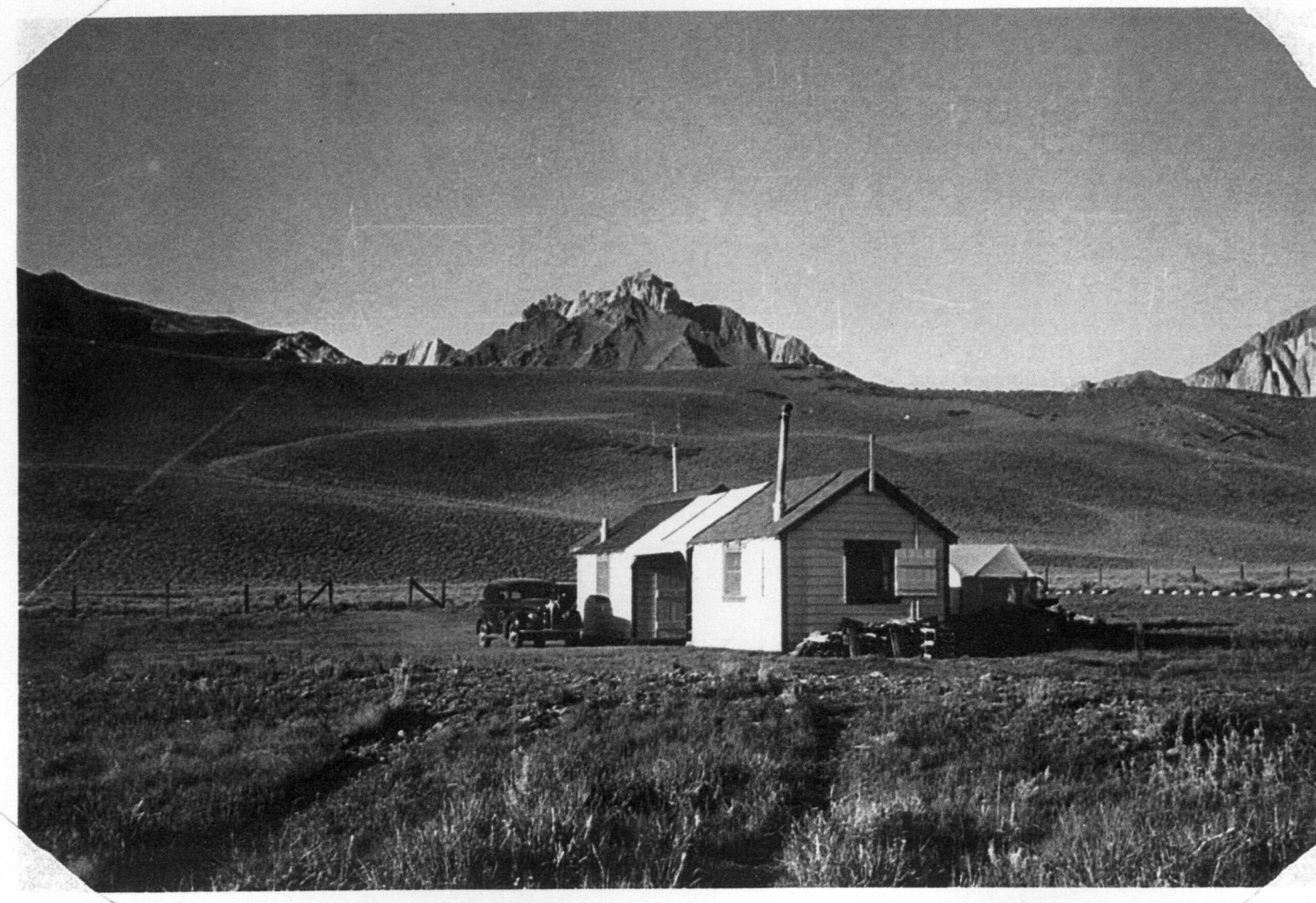
1935: LADWP leased 51 acres to the U.S. Bureau of Sport Fisheries and Wildlife, the predecessor of the U.S. Fish & Wildlife Service, for a biological study area, retaining all water rights for LADWP. The station began as a joint US Forest Service and Bureau of Fisheries venture in the late 1930’s for the purpose of conducting basic trout stream research. The most influential person in implementing Convict Creek Experiment Station was Paul R. Needham of the Interior Department’s Bureau of Fisheries. With a Ph.D. from Cornell, Needham brought with him a strong emphasis in aquatic entomology, much of it through the influence of his father, James G. Needham, the legendary dragonfly expert.
1935-1947: Federal biologists studied stream survival of fingerling trout in Convict Creek. The station was called the Convict Creek Experiment Station (CCES) and is seen as such on older maps of the area.
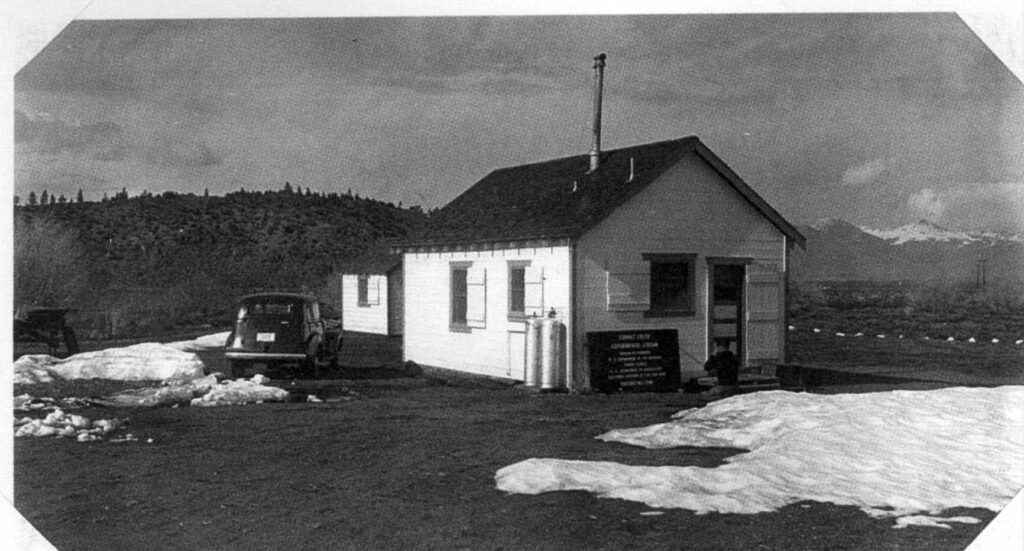
1941 – 1945: During World War II CCES, was unused and “mothballed”.
1949: CCES was reopened under the direction of Reed (Pete) S. Nielsen, a former Forest Service biologist who became affiliated with the Fish and Wildlife Service following World War II. In 1998, Pete Nielsen passed away while residing in a rest home in Reno. Also in 1949 Needham, the previous director of CCES, received an appointment as Professor of Zoology at UC Berkeley to head up a fisheries curriculum to be coordinated with the already established wildlife program under the direction of A. Starker Leopold.
1948: The bypass channel was constructed and Convict Creek was divided into four experimental stream channels, carved in a figure eight. With this system, controlled experiments could be conducted in situ using larger harvestable trout. Researchers also began detailed studies of stream ecology and limnology as well as research on trout in the adjacent high Sierra.
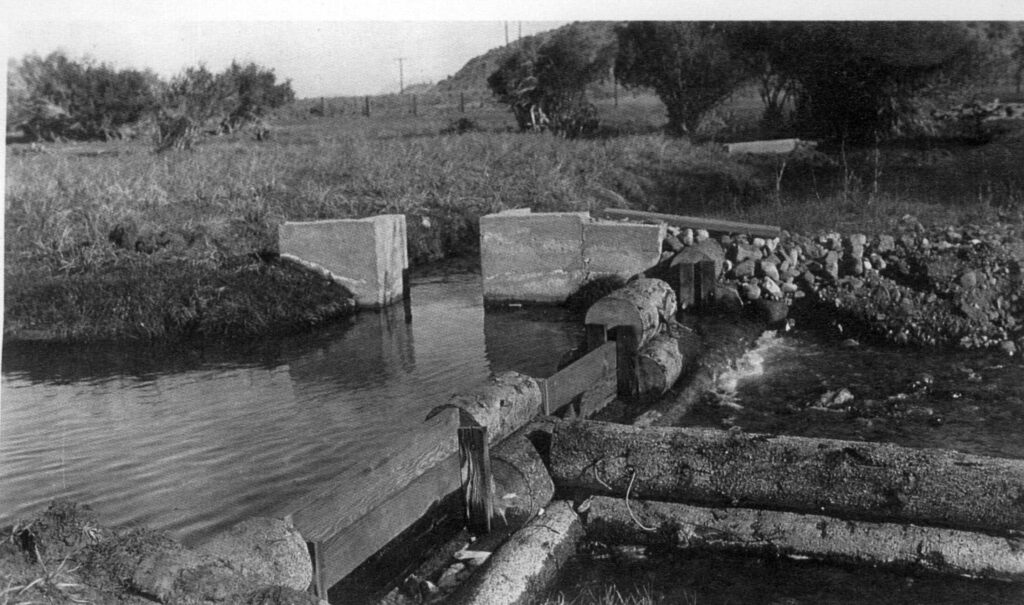
1950 – 1953: Phil Pister came to work at CCES. The concrete was still new on the stream channels, and work was continuing on their construction. Phil Pister first came to SNARL as a UCB graduate student working under Needham’s direction. Phil received his undergraduate degree from Berkeley in Wildlife Conservation under A. Starker Leopold. At the time Phil arrived, there were four buildings at SNARL. The shack was the laboratory (built in 1938) one residence to the North of the lab (now Q2) was a 17 foot square, one room house for workers, later a bedroom was added onto it. Reed (Pete) Nielsen was the laboratory director of CCES at the time. Pete lived in the second house east of the laboratory (now Q1) which was built prior to WWII. A third building was a garage and fish hatchery, this was later turned into a residence (now Q3). Phil transferred to State employment in 1953, as a California Department of Fish and Game biologist supervising aquatic research and management in the Eastern Sierra and Desert areas of California. He became deeply involved in working to preserve desert aquatic ecosystems throughout the southwestern US and northern Mexico. After retiring from the State, he continues to be active in conservation issues generally, specifically as the secretary for the Desert Fishes Council. He presently lives in Bishop.
1950’s: Two other “pioneers “ at CCES were also Needham’s UCB graduate students Norm Reimers (another of Starker Leopold’s Wildlife Conservation majors) and John Maciolek, who did his undergraduate work at Oregon State University. Pister, Reimers, and Maciolek spent three years studying (among many other things) the limnology of the lakes of Convict Creek Basin (Reimers, Maciolek, and Pister, 1955). This was the first major study and publication produced at what was later to become SNARL. John Maciolek went on for his Ph.D. at Cornell and spent his career as Professor of Zoology at the University of Hawaii, heading the Cooperative Fishery Research Unit there. In retirement he maintained a summer home at McGee Creek. Sam Reimers is retired in Carson City, Nevada. A fourth member of the early researchers was Harry D. Kennedy, an aquatic entomologist who passed away in Reno in March, 1995.
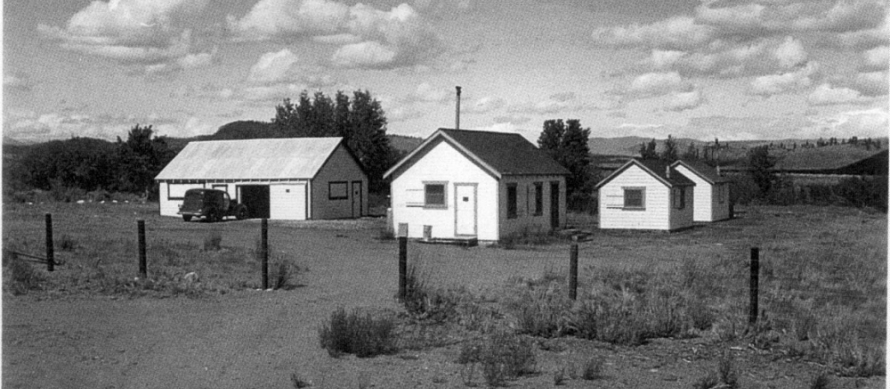
1950’s: Norman (Sam) Reimers became on-site station director.
1957 – 1958: Major construction era at the station. The Director’s house, Q8, Q7, the fish house, and the laboratory were all constructed from kits purchased from Armco Steel in the Midwest and shipped here. The road was paved at this time. Since it was only used by Fish and Wildlife employees, they were responsible for maintaining it and plowing it, at that time Mono County was not involved in plowing.
1963: Dr. Tom Jenkins arrived at the station. He worked for Phil Pister as a seasonal technician until 1965 when he began a Ph D project, at UCLA, studying trout behavior. He was hired in January of 1968, and stayed until 1973 as a full time year round employee for Fish and Wildlife. Tom weathered the winter of 1969, and remembers his house being so covered with snow, that when he shoveled the roof the snow had to be thrown up higher that the roof. He estimates there was fifteen feet of snow at SNARL after the January storms. The Fish and Wildlife workers were finally plowed out by a Park Service plow, as their equipment couldn’t keep the road open.
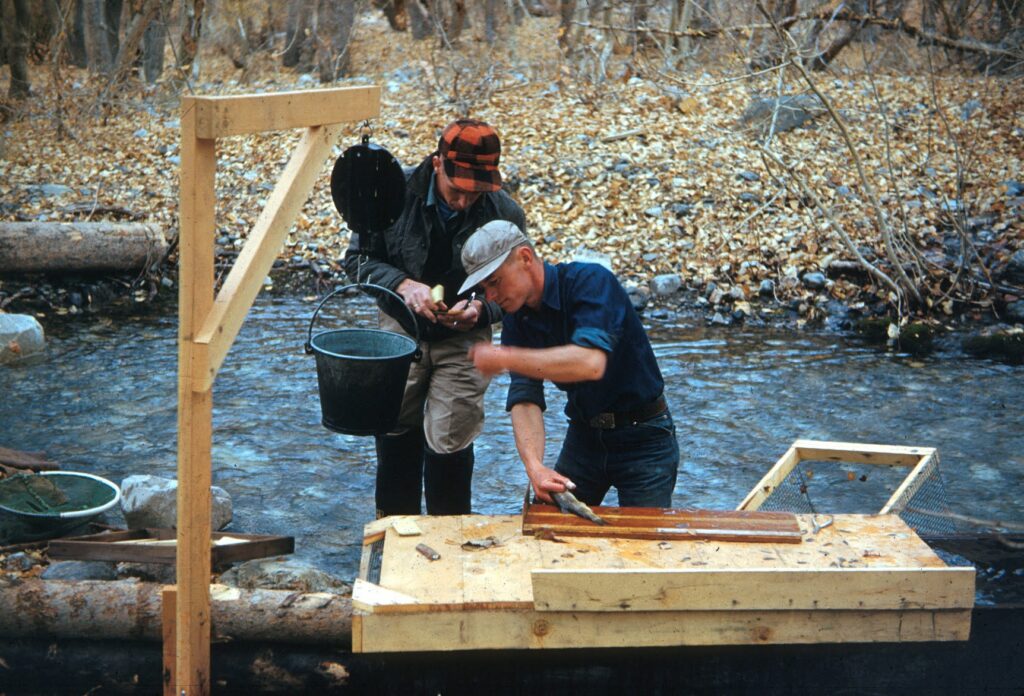
1960’s: Dr.’s Jerry Crowley (a UCD physiologist) and Tom Jenkins (a UCLA trout behaviorist) did much research on trout behavior. Tom continues to be an active participant at SNARL today.
1968: Brochure calls CCES SNARL.
1969: 15 feet of snow at SNARL.
1972: The Bureau of Sport Fisheries and Wildlife (later the Fish and Wildlife Service), under the Nixon administration, makes the decision to consolidate many small labs into bigger facilities. This was during the Vietnam War, and the closure was ostensibly part of the war effort to downsize government and consolidate research facilities. The decision was made to abandon SNARL and transfer related research to Whitefish, Montana. A man named Bob Putz, of the Washington office, made the decision as to which Fish and Wildlife labs were closed. Those labs in larger areas, with community support generally remained open, others like SNARL were closed. Sam Reimers was head of SNARL at this time. Sam called Phil to tell him the lab was to be closed and ask if he had any ideas for its use. Phil called Roger Samuelsen, Director of the UC Natural Reserve System, minutes after Sam’s call. Roger said the University was very interested in acquiring the property. Phil and Roger had been working together on the acquisition and preservation of the Fish Slough area north of Bishop. Roger was also involved in the donation of Valentine Reserve to UCSB at about the same time. Sam also called Dr. Robert Holmes who was on the Biology faculty at UCSB.
1973: The Bureau of Sport fisheries and Wildlife reorganized as the U.S. Fish and Wildlife Service.
1973: Transfer of SNARL to UCSB, as surplus federal property, takes place. SNARL and Valentine Camp are currently administered together as the Valentine Eastern Sierra Reserve. After the University acquired SNARL, it was open only in the summers from 1973 – 1979. Sam Reimers stayed on for a time as resident director, and later retired. Bill Seal, a high school football buddy of Woody Samson, Valentine caretaker, was hired in the mid-seventies as a summer caretaker of SNARL. He retired in 1979.
1976: SNARL was used by the Mono Lake Research Group from UC Davis for original studies leading to the formation of the Mono Lake Committee and conservation efforts that led to the 1994 water board decision to again let water flow into Mono Lake. One of the original members of this group, Dr. Dave Herbst continues to use SNARL as a base for his research.
1978: Pedicularis crenulata, a perennial herb in the figwort family that was considered extinct in California, was rediscovered within the SNARL boundaries.
1978: Danny Marks, graduate student in snow hydrology with UCSB Professor Jeff Dozier, and his wife Barbara overwinter at SNARL without benefit of snowplow services.
1978: John Melack began, as an Assistant Professor at UCSB, using SNARL for his studies of Mono Lake, and this research has continued to the present. In 1980 he expanded his investigations to the high-elevation lakes of the Sierra Nevada and to the atmospheric deposition of solutes. Melack was appointed Faculty Advisor of VESR in 1979 and continues as such.
1979: Dan Dawson was hired as the manager of SNARL. He later received the title Director. The laboratory was again open year round. Dan received his BS from UCSB in 1975 in Chemistry and completed a Master’s Degree in Chemical Physics at Cal Tech in 1977. He was working as Dr. Henry Offen’s lab manager on campus at UCSB when the Valentine Director’s job became available as a full time position. Dan worked for Henry Offen until Henry retired in 1996. Henry Offen was a Chemistry professor who administered UCSB’s six Natural Reserves. He was a sincere advocate for the Reserve system, and worked hard to secure long term funding to support the Reserves. A bronze plaque commemorating Valentine Eastern Sierra Reserve’s first twenty five years with the NRS and honoring Dr. Offen’s many contributions sits in front of the SNARL Laboratory.
1982: Dr. Robert Jellison (Ph.D. UCSB) begins residence and long-term limnological studies of Mono Lake; graduate student (1982-1990), post-graduate researcher (1990-1992), UCSB Assistant Research Biologist (1992-2012). Dr. Jellison’s work encompasses a wide-array of basic and applied limnological research on biogeochemical cycling and lake productivity.
1984-85: Dawson received grant funding from the National Science Foundation to construct a passive solar dormitory. The dorm was built to house classes, with sleeping quarters for twenty-five students, and a large communal kitchen and living area.
1986: The second part of the National Science Foundation construction grant included funding to connect the old laboratory to the radiology lab to create one large T shaped building. Included in this addition was space for a large walk in cold room to conduct research on snow.
1986: Dr. Dave Herbst (Ph.D. Oregon State University) begins residence as a research biologist at SNARL as a UC Irvine post doctoral fellow, then as a UCSB Assistant Research Biologist. He has continued to conduct studies of insect and algae physiology and ecology at Mono Lake, Owens Lake and spring and stream systems throughout the eastern Sierra and Great Basin.
1987: At this time SNARL is in need of a classroom and lecture hall. Rather than construct one, Dawson purchases the Green Church from the Presbytery of Nevada for $1500. The land is leased from LADWP and is added to the SNARL lease. The Green Church, a local landmark, was constructed in 1954 to serve a wide geographic area. By 1987 the entire congregation was from Mammoth so they decided to move their church into town.
July, 1987: Scott Roripaugh is hired as a full-time maintenance worker at VESR. Up until this time, Dawson was doing maintenance and administration. Roripaugh, raised in the Bishop area, is later promoted to Maintenance Supervisor.
May, 1990: Gayle Dana, researcher at SNARL, organizes the first Spring SNARL Seminar Series. This series of 6-8 talks takes place evenings at the Green Church and is open to the public.
1990-1991: Dawson secures NSF funding to construct a second set of experimental stream channels. The nine channels are 50 m long and 1 m wide and are meant to be statistical replicates. An additional five acres was added to the SNARL lease to provide space for this project. Water goes into the so-called “Disney Channels” in the fall, 1991.
June, 1991: Cabot Thomas is hired as a seasonal maintenance worker at VESR.
1991: Roripaugh and Dawson construct an addition to residence Q7, the Director’s residence at SNARL.
1992: Dr. Roland Knapp (Ph.D. UCSB) began working full time at SNARL as a UCSB Assistant Research Biologist, although he first came to the lab in 1986 as an undergraduate to work with Dr. Tom Jenkins. Dr. Knapp’s work has focused on the alpine and subalpine aquatic systems of the Sierra Nevada including work on impacts of cattle grazing on streams and the impacts of introduced trout on the native biota.
1993: The cows were fenced off Convict Creek above SNARL to restore the natural streamside. SNARL constructed the fence, a watering a trough, water tanks, and a diversion system to provide water for cattle grazing during the summer months.
1995: Leslie Dawson, a former State park ranger and elementary and middle school teacher is hired as Education Coordinator at VESR and the Outdoor Science Education Program begins as the primary public outreach program. In a few years, over 2000 Inyo and Mono County school children are visiting VESR on field trips.
1996: Dr. Scott Cooper became new UCSB NRS Director upon Dr. Henry Offen’s retirement. Scott is a biology professor who has had continuous research interest in stream ecology at SNARL since 1980. He was the first scientist to make use of the new experimental stream channels.
Sept. 1995 -Oct. 1997: With funding from NSF Dawson purchased, moved, and renovated the Headquarters building. The building was constructed in 1935 on what are now the northbound lanes of US 395 in Long Valley, as a dormitory for snowplow drivers. In 1963 the building was moved approximately 500 ft. north to allow for construction of the four-lane project. By 1995 Caltrans was no longer using the building so Dawson approached them for purchase. Scott Roripaugh performed most of the renovations over the next 2 years. The building was “officially” opened in October 1997.
August, 1997: With the construction of a local area network to serve Headquarters and the lab, SNARL leases a frame relay circuit for a dedicated Internet connection.
October 1997: Valentine Eastern Sierra Reserve 25th anniversary celebration, At this gala event, which featured UC Vice President Reg Gomes, UCSB Executive Vice Chancellor Donald Crawford, and UCSB Vice Chancellor for Research France Cordova, a plaque was also dedicated to Dr. Henry Offen for his significant contributions to the Natural Reserve System. It is located in front of the lab.
1998: Using UCSB and UCOP funds (matching funds for the NSF award for Headquarters) a large steel garage is constructed to house all of SNARL’s maintenance, construction, and research equipment.
1999: Under the direction of Dr. Robert Jellison, the International Society for Salt Lake Research was incorporated and offices moved to SNARL. The society was founded in 1979 to establish effective liaison between persons interested in any aspect of inland saline waters, to encourage these interests, and to educate the public in the scientific use, management, and conservation of salt lakes.
2000: Dr. Scott Cooper steps down as Director of the UCSB NRS office. Dr. Henry Offen is pulled from retirement to act as Interim Director.
June, 2001: Mammoth Mountain Ski Area commits to underwriting the costs of the Outdoor Science Education Program.
August 4, 2001: Chancellor Henry Yang visits SNARL. At a luncheon at Valentine Camp, with Vice Chancellors Steve Gaines and John Wiemann and their wives, Yang presents a plaque to Mammoth Mountain Ski Area CEO Rusty Gregory for his support of the Reserve.
2001: Dr. William Murdoch, a distinguished professor of Ecology at UCSB, is selected as the Director of the UCSB NRS.
June-July, 2003: Roripaugh and Dawson construct an addition to Q7, the Director’s residence, to serve as an office for the Outdoor Science Education Program.
March, 2004: UC Vice Provost for Research, Lawrence Coleman visits SNARL, Valentine Camp and the White Mountain Research Station.
April, 2004: Roripaugh resigns as Maintenance Manager and is replaced by Gary Lewis.
2004: Renovation to Q2 cabin is completed by Lewis. A new emergency fire pump is installed, a recycling program is introduced and the Valentine Reserve Fund is formed by Dawson and Mammoth Mountain CEO Rusty Gregory.
2005: A new lab water system is installed.
October, 2005: SNARL hosts the 2005 Annual Natural Reserve Management Workshop.
May, 2006: Gary Lewis resigns as Maintenance Director and is replaced by Jim Delabar.
2006: Renovation to Q3 cabin is completed. New energy efficient windows are placed in Q8 and dorm buildings.
2007: The garage and laundry room in Q8 is remodeled into a bedroom and bath increasing occupancy to 10. Scheurer Architects are hired to prepare site plans for new facilities at SNARL and a schematic design for a new classroom. Triad Holmes Engineering is hired to prepare plans for reconstruction of the road and parking facilities.
January, 2008: Negotiations commence with the Los Angeles Department of Water and Power for a new 30-year lease at SNARL.
2008: Q1 remodel is complete. A high speed wireless internet system is installed at both SNARL and Valentine Camp. SNARL experiences a serious flood when the blocked outlet to Convict Lake is cleared by USFS personnel. Working with 4 grad students from the Advanced Power and Energy Graduate Program in the School of Engineering at UCI, we completed a comprehensive energy conservation and generation white paper for SNARL. SNARL is ideally suited for photovoltaic electrical generation we are seeking campus green initiative funds (TGIF) for partial implementation of a first phase of PV. Architect Charles Woodburn was retained to design the lab modernization.
April, 2009: Dawson is contacted by Dr. Tony Beasley of NEON Inc. to establish SNARL as the core aquatic site and STREON site for the CA domain of the National Ecological Observatory Network.
2009: The dorm undergoes a renovation receiving new floors, paint and a fire alarm system. The lab windows are replaced with energy efficient double pane glass.
2010: The Lab building gets a facelift. The entire building is gutted and remodeled with a new layout, flooring, paint, and cabinetry.
